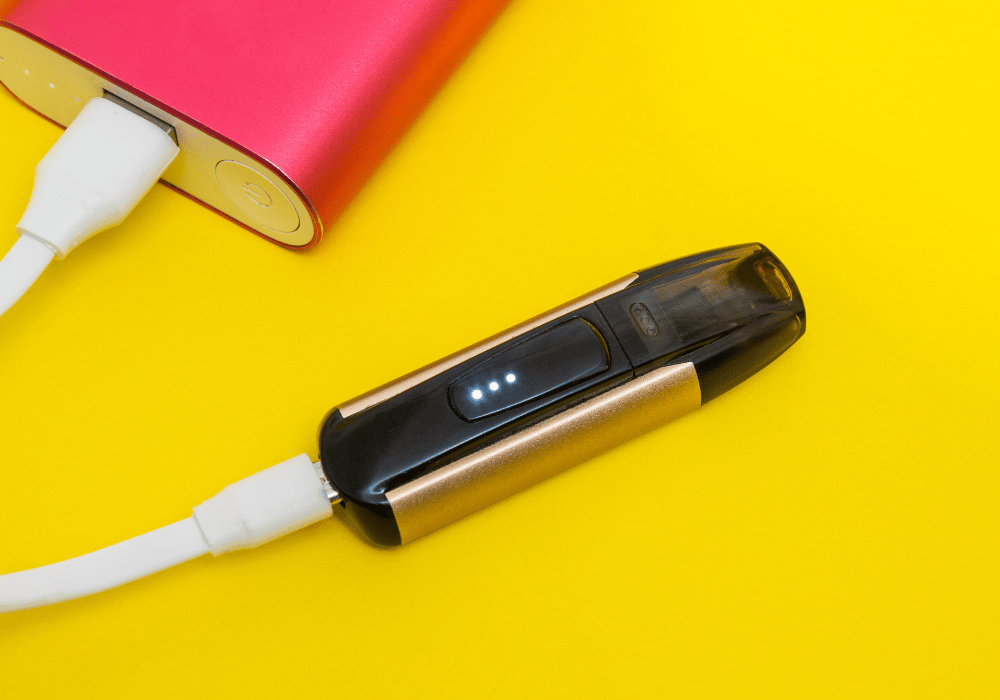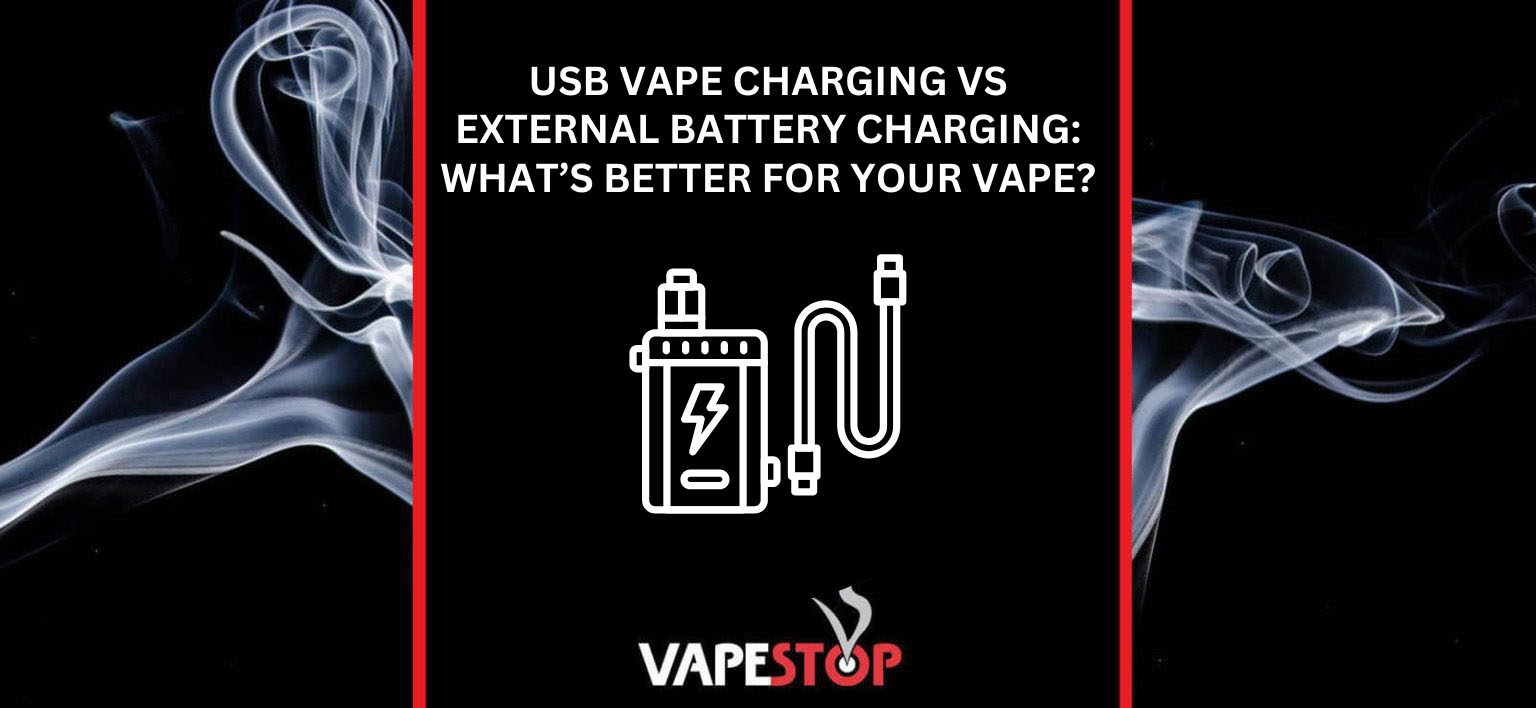Vape charging is a critical aspect of owning and maintaining a vaping device. Whether you’re new to vaping or a seasoned enthusiast, choosing the right charging method can significantly impact your device’s performance, lifespan, and overall convenience. Two popular methods, USB charging and external battery charging, each have their own set of pros and cons. This blog dives into the differences between these two methods, exploring key factors like convenience, safety, cost, and compatibility to help you make an informed decision.
The Basics of USB Vape Charging

USB charging is one of the most straightforward ways to recharge vape devices. Most modern vapes come with a USB port, allowing users to charge them directly through a wall adapter, power bank, or even a laptop.
Convenience and Accessibility
One of the primary advantages of USB charging is its convenience. USB ports are ubiquitous, which means you can charge your vape almost anywhere. Whether you’re at home, at work, or on the go, you’re likely to find a nearby outlet or USB port to plug into. Additionally, many devices now feature fast-charging technology, minimizing downtime.
However, the convenience of USB charging can sometimes lead to overuse, which may reduce your battery’s overall health over time. It’s also worth noting that frequent charging through low-quality adapters or incompatible cables can cause overheating issues. Always use the charging cable provided by the manufacturer or a compatible high-quality replacement for optimal results.
Safety Considerations
While USB charging is generally safe, it carries some risks if not done correctly. Charging directly from a wall socket using a trusted adapter is typically more stable than using a third-party power bank or laptop. Low-quality or damaged cables can cause short circuits, leading to battery failure or even device damage.
To minimize risk, always ensure your USB-powered charger is fully compatible with your vape’s voltage and amperage requirements. If you notice your device getting excessively hot during charging, unplug it immediately and consult the manufacturer’s guidelines.
External Battery Charging Explained
External battery charging, on the other hand, involves removing rechargeable batteries from the device and charging them using a dedicated external charger. This method is popular among advanced vapers and those who use high-powered mods with removable batteries.
Enhanced Longevity and Control
One standout advantage of external battery charging is that it puts the longevity of your batteries and device firmly in your control. High-quality external chargers are designed to monitor the health and charge cycles of your batteries, preventing issues like overcharging or overheating.
For vapers who use devices with removable batteries, external charging is almost a necessity. It allows you to keep spare batteries fully charged and ready to go. This means uninterrupted vaping, as you can simply swap out a depleted battery instead of waiting for internal charging to complete.
However, the added control and flexibility come with a learning curve. Users need to be well-versed in battery safety and ensure proper handling of their rechargeable cells. Mishandling batteries—like using those with damaged wraps—can pose serious safety risks.
Costs and Practicality
Investing in an external charger and additional batteries can be costlier upfront compared to USB charging. That said, the expense pays off in the long run, especially for heavy vapers. By alternating between batteries, you reduce wear and tear on individual cells, extending their lifespan and ultimately saving money.
The downside lies in practicality. External chargers and spare batteries aren’t the most portable solutions. Compared to USB charging, this method might feel less convenient for users who prefer to travel light or require charging options while on the move.
Comparing Speed and Performance

Both USB and external battery charging offer distinct advantages when it comes to speed and performance. Which method is better often depends on the type of device and how you use it.
Charging Time
USB charging is generally optimized for the device it supports, meaning charge times are reasonable and efficient. However, this varies based on whether the device is equipped with fast-charging capabilities. Some smaller vape pens may charge fully in less than an hour, while larger box mods may take several hours.
External battery chargers, especially high-quality models, often provide a faster and more consistent charge. Many external chargers have adjustable voltage modes and advanced features like fast charging or balance charging. This can significantly reduce the downtime of your batteries compared to USB charging.
Battery Performance
For long-term health and performance, external battery charging tends to have the upper hand. External chargers are designed to optimize charging conditions, preserving battery capacity over time. USB charging, though convenient, may strain integrated batteries if overused or paired with the wrong adapter.
To maintain optimal performance, it’s important to follow recommended charging practices, regardless of the method. Avoid draining your battery completely before recharging and aim to maintain charge levels between 20-80% for lasting results.
Which Method Is Right for You?
To determine a better vaping experience, consider your specific needs and priorities. Casual vapers or those who use starter kits with built-in batteries might find USB charging more than sufficient. It’s easy, widely available, and doesn’t require much extra equipment.
On the other hand, frequent or advanced vapers with high-powered mods will likely benefit more from external battery charging. The ability to swap out batteries and maintain control over charge cycles adds versatility and reliability, which is essential for heavy usage.
Ultimately, both USB and external battery charging have their place in the vaping world. The key is to understand your vaping habits and choose the method that balances convenience, performance, and safety for your lifestyle.
Whether you opt for USB charging or external battery charging, understanding the differences between the two is essential for maintaining your vape device and ensuring a safe experience. USB charging offers unmatched convenience, making it ideal for users who prioritize simplicity. Meanwhile, external battery charging provides better longevity and flexibility, catering to vapers who demand precision and reliability.
By staying informed and following safe charging practices, you’ll extend the life of your equipment and improve your overall vaping experience. Whichever route you take, remember that investing in quality charging accessories and batteries is always worth it.

